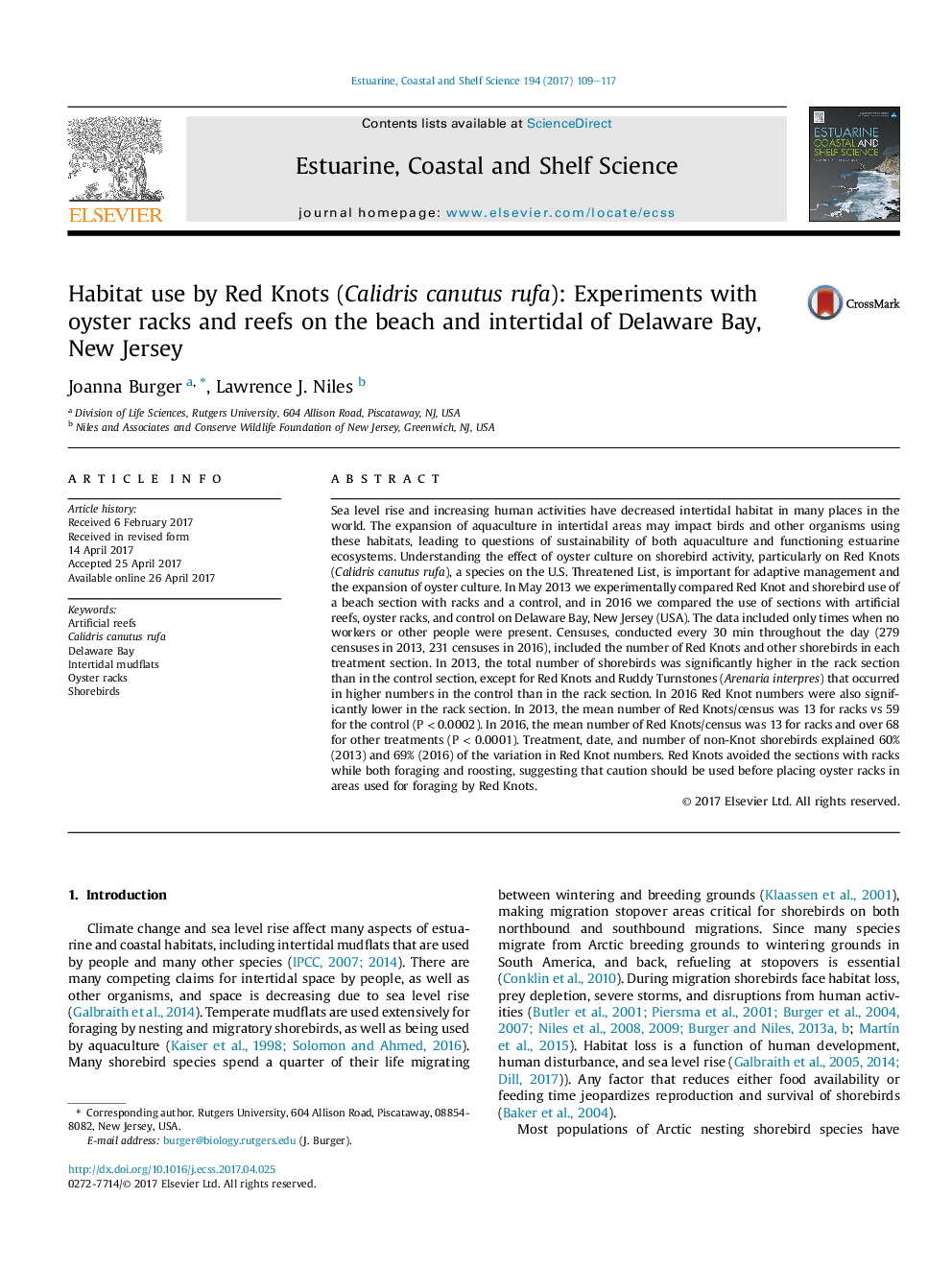| کد مقاله | کد نشریه | سال انتشار | مقاله انگلیسی | نسخه تمام متن |
|---|---|---|---|---|
| 5765090 | 1626608 | 2017 | 9 صفحه PDF | دانلود رایگان |

Sea level rise and increasing human activities have decreased intertidal habitat in many places in the world. The expansion of aquaculture in intertidal areas may impact birds and other organisms using these habitats, leading to questions of sustainability of both aquaculture and functioning estuarine ecosystems. Understanding the effect of oyster culture on shorebird activity, particularly on Red Knots (Calidris canutus rufa), a species on the U.S. Threatened List, is important for adaptive management and the expansion of oyster culture. In May 2013 we experimentally compared Red Knot and shorebird use of a beach section with racks and a control, and in 2016 we compared the use of sections with artificial reefs, oyster racks, and control on Delaware Bay, New Jersey (USA). The data included only times when no workers or other people were present. Censuses, conducted every 30Â min throughout the day (279 censuses in 2013, 231 censuses in 2016), included the number of Red Knots and other shorebirds in each treatment section. In 2013, the total number of shorebirds was significantly higher in the rack section than in the control section, except for Red Knots and Ruddy Turnstones (Arenaria interpres) that occurred in higher numbers in the control than in the rack section. In 2016 Red Knot numbers were also significantly lower in the rack section. In 2013, the mean number of Red Knots/census was 13 for racks vs 59 for the control (PÂ <Â 0.0002). In 2016, the mean number of Red Knots/census was 13 for racks and over 68 for other treatments (PÂ <Â 0.0001). Treatment, date, and number of non-Knot shorebirds explained 60% (2013) and 69% (2016) of the variation in Red Knot numbers. Red Knots avoided the sections with racks while both foraging and roosting, suggesting that caution should be used before placing oyster racks in areas used for foraging by Red Knots.
Journal: Estuarine, Coastal and Shelf Science - Volume 194, 15 July 2017, Pages 109-117